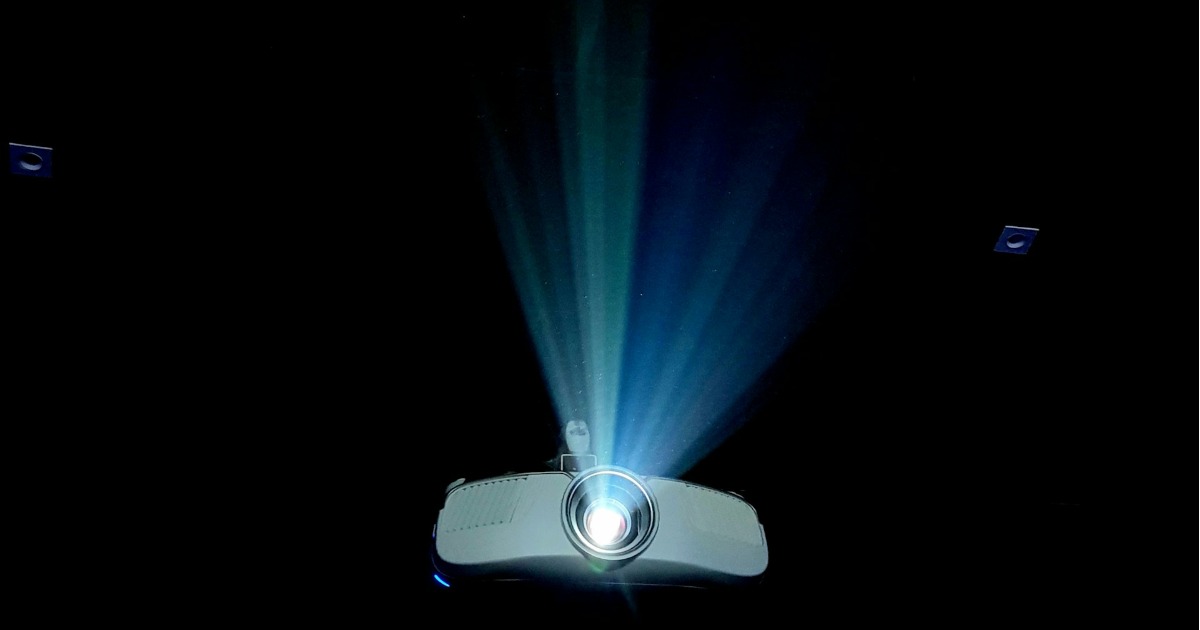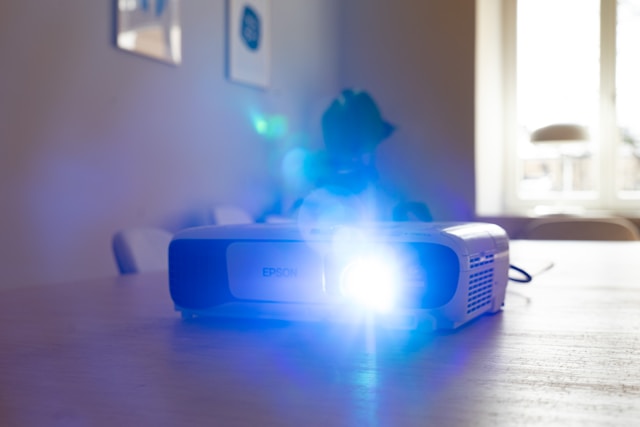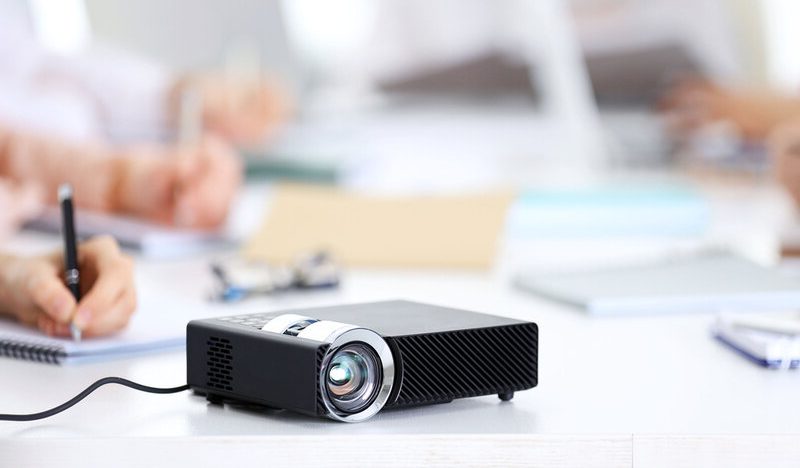What Are Projector Lights? 4 Projector Light Sources With Detailed Guides
- 22 Apr 2025 07:22
- 273

Image and lighting technologies are at the heart of all projectors. However, do you understand them all? What are projector lights? It is the light generated by the light sources of the projection device. Depending on individual needs, there are four different sources: lamp, LED, laser, and hybrid. To learn more about each projector's brightness and characteristics, continue reading this article.
What Are Projector Lights?

Projector lights is a term to refer to the light produced by projection devices. There are 4 ways projectors produce brightness: lamps, LED, laser and hybrid. You can determine the brightness of the device in lumens. It describes the amount of light that the projector can emit onto the screen. The higher the lumens, the brighter, sharper, and clearer the projected image. Many manufacturers even use a standard called ANSI lumens to rate brightness on some surfaces. Depending on the projector's intended use, you can choose the appropriate brightness. A home cinema with a dark space will be a completely different environment than an outdoor space. Consider your own decision. A good piece of advice is to choose the projector with the most powerful brightness in the budget. It will give you more flexibility in many situations.
Different Types Of Light Source
In the following section, you will get acquainted with the three different types of lighting technologies that frequently appear on projectors. In addition, Display Central will also introduce an additional option that has appeared recently, a hybrid brightness source.

Lamp Based Light Sources
The lamp is the oldest projector light source and still exists today. The two most popular lamps are UHP (Ultra High Performance) and metal halide. Metal halide lamps are composed of mercury and rare earth metal salts. It has a lifespan of about 3,000 hours. Although mercury can produce strong brightness, many people are concerned about its environmental problems with disposal. The UHP lamp was a Philips invention in 1995. It soon became a major turning point in replacing the traditional halogen lamps. The operating cost of a UHP device is quite reasonable. It also has a longer lifespan and better performance. The lifespan of the UHP is also around 3,000 hours, but the brightness will gradually decrease from the first use. You should also equip a cooling system to dissipate heat for the device when in use. The size of the lamp also makes the projector bulkier. This light source is suitable for those who have a limited budget and do not use the device often.
LED Light Engine
LED lights have strong popularity with most projectors of small sizes. The brightness of this device only ranges from 100 to 1,500 lumens to utilize the full potential of LED. So, the output image is always more colorful than usual. This picture mode will be suitable for home entertainment systems or cinemas. However, it is not ideal for use in the office or classroom.
Laser-Based Light Sources
In early 2010, Sony took a step forward with the RGB laser brightness source launch. They use red, blue, and green lasers with a combined output of 21 watts. The brightness of laser projectors is truly outstanding when it comes to 5,000 lumens and a lifespan of up to 30,000 hours. This device can stay lit until you no longer use it. Starting up this type of projector is also very quick as they only take a few seconds to turn on. You won't have to worry about waiting for the device to heat up or cool down.
Hybrid Light Engine
Finally, we cannot ignore the hybrid light source. It combines LED, laser, and fluorescent technology to produce the most powerful brightness. This type of technology is environmentally friendly and saves energy much more than conventional lamps. The brightness of these devices ranges from 1,500 to 4,500 lumens. It is usually a single-chip DLP projector. The device's biggest advantage is its ability to deliver high-precision and good-contrast images. So, they are well suited for educational or office use. Its average lifespan is about 20,000 hours. The device takes just eight seconds and requires no cool-down period for maximum performance.
FAQs
If you have any questions regarding projector lights, find the answers here.

Outdoor light projector
1. Do High Lumens Equal Excellent Viewing Quality?
Brightness is one of the criteria to evaluate the quality of a presentation device. So, will a device with high lumens guarantee a clear and sharp image on many different projection screen sizes? Actually, it doesn't work like that. Choose a projector with the right brightness for the best contrast ratio and color effect.
2. What About Brightness For Outdoors Projectors?
These lighting fixtures will need a large and powerful brightness to cope with the outside brightness. As a rule, you'll need a projector with 3,000 lumens or more to power an outdoor cinema. The best time to watch a movie is when the sun goes down, or it's dark. However, if you want to project images during the day, the minimum brightness level is 5,000 lumens. Only such brightness is enough to keep the image from being washed out.
3. Do Projectors Have Blue Light?
Blue light is a type of light that can negatively affect your vision. Most electronic devices can produce blue light. Projectors are no exception. This device produces blue light, but it will not shine directly into your eyes. Instead, the brightness bounces off another surface before you see it. This surface will absorb a part of harmful wavelengths to limit its impact on vision. Compared to TVs, this is a notable advantage of projectors. It will protect your eyes better.
4. Why Are My Projector Headlights So Dim?
Over time, oxidation can cause your lenses to be yellow, cloudy, and foggy. It prevents more light from passing through than clear lenses. This phenomenon makes your projector headlights always blurry and faded. It will affect your visual experience.
5. When Should I Replace My Projector Bulb?
To know when to replace a projector lamp, you need to check the bulb's life. Most projector lamps have a lifespan that ranges from 1,500 to 2,000 hours. Yet, you can find some models capable of lighting up to 5,000, even 10,000 hours. The projector lamp uses high-pressure xenon and mercury inside the structure. It is the reason why they fade over time.
Conclusion
Hopefully, this article has helped you have an overview of the current lighting technologies of projectors. Each technology has its advantages and disadvantages. Depending on your personal needs and budget, choose the best device for you.
